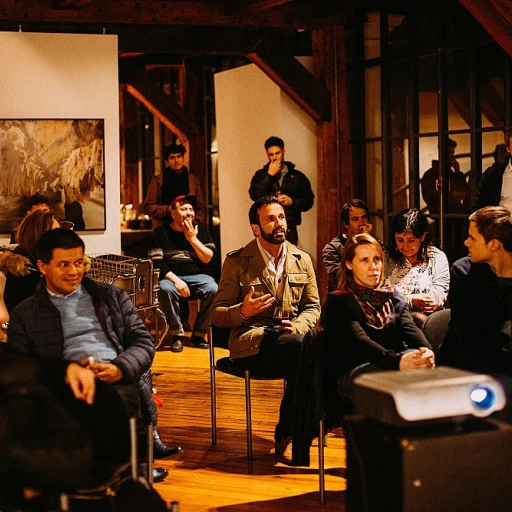The Role of Innovation in HR
Innovation as a Catalyst for HR Transformation
In today's fast-evolving business landscape, innovation has become a key driver for transforming various organizational functions, and Human Resources (HR) is no exception. As businesses compete to attract, engage, and retain top talent, HR strategies need to be agile, forward-thinking, and infused with innovative approaches. Innovation in HR involves integrating novel practices and tools that not only enhance operational efficiency but also foster a workplace environment where creativity and continuous improvement thrive. This transformative approach allows HR professionals to align more closely with broader organizational goals, ensuring that they contribute actively to company growth. Chief Human Resources Officers (CHROs) are playing a pivotal role in advocating for and implementing innovative HR practices. By embracing technology, they are streamlining recruitment processes, enhancing employee experiences, and optimizing performance management systems. For more insights on how the CHRO role is evolving in this tech-enhanced landscape, check out how chief human resources officers are embracing tech here. By fostering a culture of innovation within HR, organizations can lay the groundwork for sustained success. This culture nurtures employee engagement and retention while driving productivity. Also, a strong innovation-driven HR strategy acts as a foundation for strategic and data-driven decision-making, as we'll explore further in subsequent sections of this discussion.Creating a Culture of Innovation
Fostering an Environment of Creative Thinking
Creating a culture of innovation within human resources requires more than just endorsing trendy technologies or setting broad visionary goals. It is about nurturing an environment where creative thinking thrives and is encouraged at all levels of the organization. By emphasizing the importance of continuous learning and open communication, HR departments can empower employees to propose novel ideas and take calculated risks without fear of repercussions. One of the first steps in fostering such an innovative culture is to ensure that leadership is on board. Leaders must champion change and adaptability, setting a tone of enthusiasm and support for experimentation. This attitude can cascade down, inspiring teams to break free from traditional silos and collaborate cross-functionally for fresh perspectives and solutions. Moreover, implementing practices that reward creative contributions and highlight successful outcomes can significantly boost morale and motivation. Recognizing and celebrating innovative achievements can generate a ripple effect, leading to sustained inventive efforts across the organization. Integrating a feedback-rich environment is another valuable strategy. By facilitating channels for transparent feedback, HR teams can harness diverse ideas, refine processes, and better meet the evolving needs of both the organization and its workforce. Ultimately, an innovation-forward culture relies on the seamless blend of visionary leadership, supportive infrastructure, and an inclusive atmosphere where every voice is valued. Such a dynamic setting not only sparks creativity but also aligns with the broader technological advances and strategic objectives discussed throughout the exploration of innovation within human resources.Data-Driven Decision Making
Harnessing Data to Transform HR Strategies
The landscape of human resources is continuously evolving, and one of the most significant drivers of this evolution is data-driven decision making. As organizations strive to create a culture of innovation and embrace new tools for employee engagement, it's essential to leverage data to guide strategic decisions effectively. Data plays a pivotal role in enhancing HR strategies by providing insights into employee performance, satisfaction, and retention. By analyzing this data, HR professionals can identify trends and patterns that were previously overlooked. This allows for more informed decisions that can lead to improved talent management and organizational success. For instance, turnover rates and employee feedback data can be used to identify areas for improvement, ensuring that the organization is not just reactive but strategically proactive in addressing workforce challenges. Moreover, data-driven decision making is not just about analyzing past performance; it is also about predicting future trends and outcomes. Predictive analytics can help HR leaders anticipate employee needs and behavior, allowing them to design targeted retention strategies and tailor development programs that align with individual career paths. The integration of innovative tools and technologies, such as artificial intelligence and machine learning, further enhances the ability of HR teams to harness data effectively. These technologies can automate data collection processes and provide real-time insights, enabling HR professionals to focus on strategic planning rather than administrative tasks. In conclusion, embracing a data-driven approach is essential for staying ahead in the ever-evolving field of human resources. It not only equips HR professionals with the tools needed to foster a culture of innovation but also ensures long-term success through strategic decision making. To explore more on how sustainability intersects with innovation in HR strategies, visit our article on sustainability in innovation.Innovative Tools for Employee Engagement
Engaging Employees with Cutting-Edge Approaches
In the rapidly evolving world of human resources, keeping employees engaged is no longer about traditional methods alone. In this part, we delve into how innovative tools are empowering HR professionals to boost employee engagement in novel ways. As we've explored the role of innovation in HR, it's evident that traditional approaches must evolve to stay competitive.Implementing advanced technologies is pivotal in transforming employee engagement strategies. These innovative tools allow HR departments to tailor experiences, making them more personalized and inclusive. For instance, AI-driven platforms can help identify employee preferences and leverage real-time feedback to adjust initiatives accordingly. This kind of immediate response makes employees feel heard, supporting higher levels of satisfaction and commitment.
Moreover, virtual and augmented reality (VR/AR) offers immersive training experiences, helping employees develop skills in engaging environments. Not only do these technologies enhance learning outcomes, but they also create a sense of excitement and novelty that encourages participation. As we've previously discussed the importance of data-driven decision-making, leveraging analytics tools helps HR leaders assess which engagement strategies yield the best results.
Gamification is another innovative approach gaining traction in HR. By incorporating game-based elements into workflows and training, businesses can captivate employees while driving desired behaviors and goals. These gamified systems often include rewards, progress tracking, and competitive challenges, fostering engagement and motivation among team members.
Integrating these innovative methods requires a strategic approach, as discussed in the creation of a culture of innovation. By fostering a forward-thinking environment, companies empower HR teams to experiment with these new tools, adapting them to fit the unique needs of their workforce. Ultimately, such dynamic engagement strategies not only enhance employee satisfaction but also contribute to long-term success and staying ahead of industry trends.



